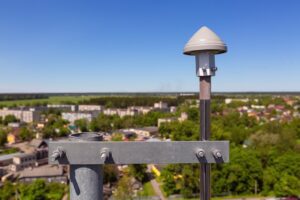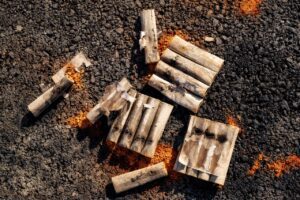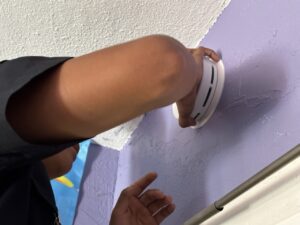MySafe:LA has been involved with Community Risk Reduction since our inception in 2008. Our parent organization is called the Safe Community Project, Inc. Our purpose for existing is based around creating a safer community.
The public expects that certain services be provided by local government, including police protection, fire protection, and various city services, such as water and power. In some cases, those services are managed by private or semi-private organizations, but the overall result is the same. If you live in a city such as Los Angeles, you have an expectation that your basic life/safety needs will be provided for.
So, what is “community risk reduction?”
MySafe:LA is actively working to reduce the threat of fire in your home by doing things the fire department cannot do on their own. Regardless of the entity engaged in the process, the act of prevention – taking steps before the problem arises – is what community risk reduction is all about.
Unfortunately, in today’s accountability-driven metric world, being able to focus on all of the required elements for fire and life safety are daunting. Add in the evolving and growing medical services most fire departments, including the Los Angeles Fire Department provide, and fire prevention becomes a challenging and complex process. The LAFD’s Fire Prevention Bureau is responsible for the city’s Fire Code, for enforcing it, not to mention inspecting commercial, industrial, as well as other types of structures. They work to ensure churches are safe, that schools are prepared for fire/disasters, and many other tasks.
Back in the early part of the last century, visiting homes and inspecting them for fire problems was more possible. There were fewer homes. Firemen had more time. Today’s firefighters don’t have time for much beyond training and responding to calls for help. Even as recently as the 1940s, it was becoming apparent that the fire department could not reach as many homes as it would like.
One of the earliest forms of community risk reduction was implemented by the LAFD. Chief Engineer John Alderson implemented the Junior Fire Department Program. Working with the Los Angeles Board of Education, specific time was set aside in classrooms to teach elementary age students about fire prevention. They inspected their homes for fire dangers, and took a series of short quizzes, all designed to push fire prevention home to families and extended families.
The program worked well. During the first year, 29,052 students became Junior Fire Department members, and 10,105 of them earned inspector’s badges. Those students found and corrected an estimated 96,000 fire hazards in their homes. It was the birth of community risk reduction in the western United States. The program was effective for more than 20 years, but eventually became too challenging to manage, and as the classroom requirements became more complex, budget requirements changed, and the model of the fire department evolved, the Junior Fire Department languished until is ceased to exist in 1970.
Fast forward to 2008, and the initial pilot for MySafe:LA. Our founding directors knew that working with children would be an effective method of getting fire prevention messages home – and that parents, grand parents and the extended family would benefit from the enthusiasm shared by their elementary school aged children.
Since that time, MySafe:LA has delivered fire and life safety education to more than 250,000 Los Angeles school children. They’ve taken fire knowledge quizzes, received free smoke alarms and other materials, and have been taught the key things to know about fire safety in the home – having a plan, practicing it, knowing where to meet, how to manage pets during an emergency, and much more.
In 2013, MySafe:LA began the Junior Fire Inspector Program. Based loosely on the original program conceived by LAFD Chief Alderson, 4th and 5th grade students were given a series of steps to take, including inspecting their home for working smoke alarms. If any student needed a smoke alarm, MySafe:LA would provide one at no cost. If batteries were required, MySafe:LA would provide those as well, also at no cost. In the first year of the program, more than 3,300 students in LA School earned Junior Fire Inspector ID Cards, and thousands more were exposed to the key fire prevention initiatives so important to a safer community.
Throughout all of these efforts, MySafe:LA has collaborated with the Los Angeles Fire Department to promote the capabilities of the Department, and to get the public involved in the fire prevention process – creating true community engagement. MySafe:LA doesn’t use any city or LAFD funds, and as such, it creates a valued private/public partnership with the Department and with the City of Los Angeles.
Local fire companies are featured at school and older adult fire safety presentations. MySafe:LA developed “Pledge Cards” that all LAFD stations use to gain basic information from residents when they inquire about and receive free smoke alarms. The Department’s research unit gathers the data collected, but most of the analysis, logistics, printing, and cost related to these initiatives is managed by MySafe:LA. As such, the firefighters are presented to the community as their local heroes; the men and women who rush into dangerous situations when most of us are running away. Yet, these firefighters can focus on their key missions (there are many to manage), leaving the heavy lifting to the Safe Community Project and MySafe:LA.
MySafe:LA’s leadership has worked diligently to ensure its programs conform to evolving national standards, and it shares information openly with partners. The innovative Vision 20/20 project, headed up by retired Fire Marshal Jim Crawford is one example of a collaborative engagement. MySafe:LA also works within NFPA and USFA and IAFF guidelines to ensure the most accurate and appropriate messages and content are shared with the public.
The early months of 2014 were tragic as it related to fire in the home. More than a dozen people lost their lives due to fire, and before the end of the year, the fatality count had risen to more than 20, including children and senior citizens.
MySafe:LA developed a specific campaign to combat these losses. Fire Burns. Smoke Kills™ was initiated via public service announcements, flyers, and in-classroom presentations. MySafe:LA collaborated on the program with the LAFD, and donated thousands of smoke alarms to the Department to help kick the program off.
In mid-2014, MySafe:LA extended its community risk reduction efforts and began visiting homes directly. Our home fire safety educators (we don’t call them inspectors) talk with families about fire safety. They deliver and install free smoke alarms and CO Detectors, and show families how to test them and what to do in the event of a fire. In the time period from June of 2014 through the summer of 2015, MySafe:LA estimates it will deliver more than 12,000 smoke alarms to residents of Los Angeles.
For the coming year, MySafe:LA intends to be more proactive and engaged with the public than ever before. Our classroom instructors, home safety educators, volunteers (many of whom are LA City Firefighters), and leadership will not only visit homes, but we’re commencing full home inspections. These inspections will gather key data about the condition of homes, their level of fire readiness, and the degree to which the residents are prepared to act in the event of a fire. The data will be collected using a new software “app” developed by a new partner, PureCommand, LLC, and will be shared in a new database that will hopefully help fire departments to better understand the true fire risks that exist, and how to best manage mitigation of those dangers.
Not only will MySafe:LA expand its home visitation initiative, it will pursue graduating several thousand more Junior Fire Inspectors in LA schools, will continue to support and collaborate with the Los Angeles Fire Department, as well as the many other partners that make Community Risk Reduction a reality – and in that regard create a safer, more engaged Los Angeles community. We’re calling it Community Risk Reduction:LA!!!







